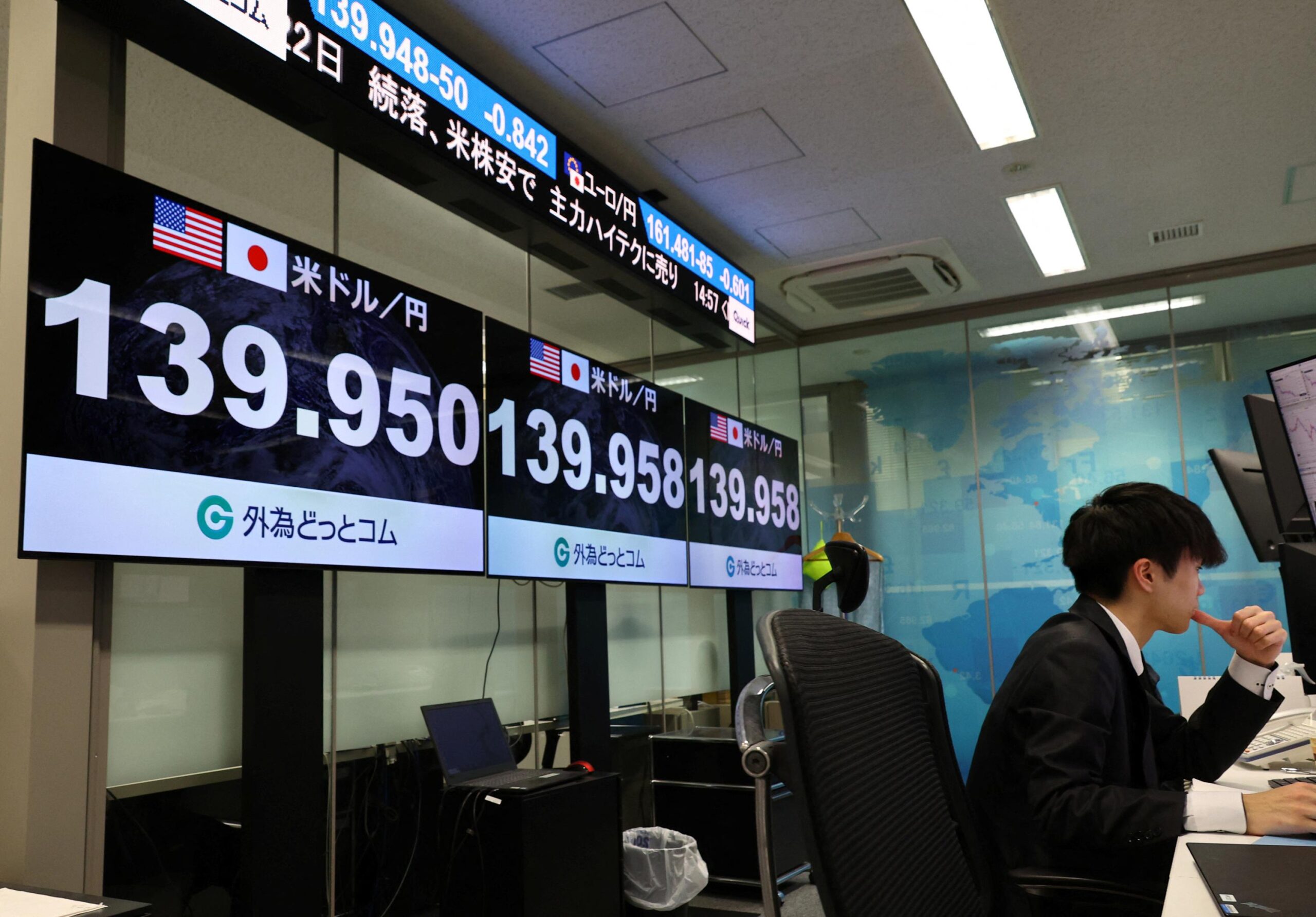
Dollar Retreats After Strong US Jobs Data; Trade War Concerns Loom
The US dollar experienced a decline on Friday following the release of unexpectedly robust US employment figures. However, analysts anticipate a potential weakening trend in the near future due to the looming impact of new US tariffs and ongoing uncertainty surrounding trade relations with China.
As of approximately 6:45 PM GMT, the greenback had shed 0.05% against the euro, trading at $1.1296 per euro. Against the Japanese yen, the dollar lost 0.24%, settling at 145.06 yen. The immediate reaction in the currency markets reflected a cautious reassessment of the dollar’s strength in light of the complex interplay between positive economic data and potentially damaging trade policies.
The US labor market remained surprisingly resilient, with the unemployment rate holding steady at 4.2% in the preceding month, according to the Labor Department’s report released on Friday. The US economy added 177,000 jobs during the period, a figure slightly below the previous month’s revised total of 185,000. Crucially, however, the job creation numbers surpassed market expectations, which had coalesced around a consensus forecast of approximately 133,000 new jobs, as reported by MarketWatch. The consistent unemployment rate, matching projections, further underscored the stability of the labor market, at least in the short term.
This employment data represents the first official glimpse into the state of the US labor market following President Donald Trump’s announcement of substantial new tariffs on imported goods. The potential ramifications of these tariffs have injected a significant degree of uncertainty into the economic outlook.
Analysts at Monex USA highlighted the temporal aspect of the data, noting that "it is possible that more impacts were felt during the second half of last month than is reflected in this survey." This observation suggests that the full effects of the tariff announcements may not yet be fully captured in the current employment figures, implying the possibility of future downward revisions or a more pronounced negative impact in subsequent reporting periods. The lag time between policy implementation and its measurable impact on economic indicators is a crucial consideration for market participants.
The dollar’s trading pattern on Friday reflected this underlying uncertainty. Initially declining at the market’s open, the dollar accelerated its losses in the hours immediately following the release of the positive employment data. However, the currency subsequently regained some ground, indicating a degree of profit-taking and market recalibration.
Kathleen Brooks of XTB attributed these fluctuations to "profit-taking," suggesting that the dollar, often referred to as the "buck," had risen "too high and too fast this week." This technical analysis points to the possibility of a temporary overvaluation of the dollar, leading to a corrective pullback as investors sought to capitalize on recent gains.
Indeed, between the closing of Monday’s trading session and the opening of Friday’s session, the dollar had experienced a notable appreciation, gaining 1.15% against the euro and 2.38% against the Japanese yen. This rapid ascent, fueled by a combination of factors including positive economic data and expectations of trade resolution, may have prompted investors to reassess their positions and lock in profits.
However, analysts at Brown Brothers Harriman suggest that "the gains of this week are not likely to be maintained" due to a "growing loss of confidence in US policymakers as well as the negative impact of tariff uncertainty on the US economy." This assessment underscores the fundamental concerns that continue to weigh on the dollar’s long-term prospects. The combination of policy uncertainty and potential economic disruption stemming from trade disputes casts a shadow over the US economic outlook and, consequently, the dollar’s strength.
The escalating trade tensions between the United States and its trading partners, particularly China, represent a significant headwind for the US economy. The imposition of tariffs on imported goods increases costs for businesses and consumers, potentially leading to higher inflation and reduced economic growth. The uncertainty surrounding the future trajectory of trade policy can also discourage investment and hiring, further dampening economic activity.
Adding to the complexity, the US dollar has also benefitted during the same week from growing optimism regarding a potential de-escalation of trade tensions between Beijing and Washington. China’s announcement that it was "evaluating" a proposal for negotiations emanating from Washington provided a temporary boost to market sentiment. President Trump’s assurance that there was a "very good chance" that the two countries would reach an agreement further fueled these hopes.
The volatile and often contradictory nature of trade-related news contributes to the overall uncertainty surrounding the dollar’s outlook. Positive developments on the trade front can provide temporary support for the currency, while negative developments can trigger sharp declines. This constant oscillation between optimism and pessimism makes it difficult for investors to accurately assess the dollar’s true value and increases the risk of unexpected market movements.
Ultimately, the dollar’s future performance will depend on a complex interplay of factors, including the strength of the US economy, the trajectory of US monetary policy, and the evolution of trade relations with key trading partners. While the recent employment data provides some reassurance regarding the health of the US labor market, the looming threat of trade wars and the growing uncertainty surrounding US policy decisions continue to pose significant challenges for the dollar. The market is currently pricing in the uncertainty, causing the aforementioned pullback and profit taking. Any clear resolution to the US-China trade dispute could quickly result in a significant dollar appreciation, but the lack of any resolution could result in further decline. For now the market seems to be approaching the situation with caution and is unlikely to provide any strong dollar movement until there is a clear indication on the path forward in US trade policy.
